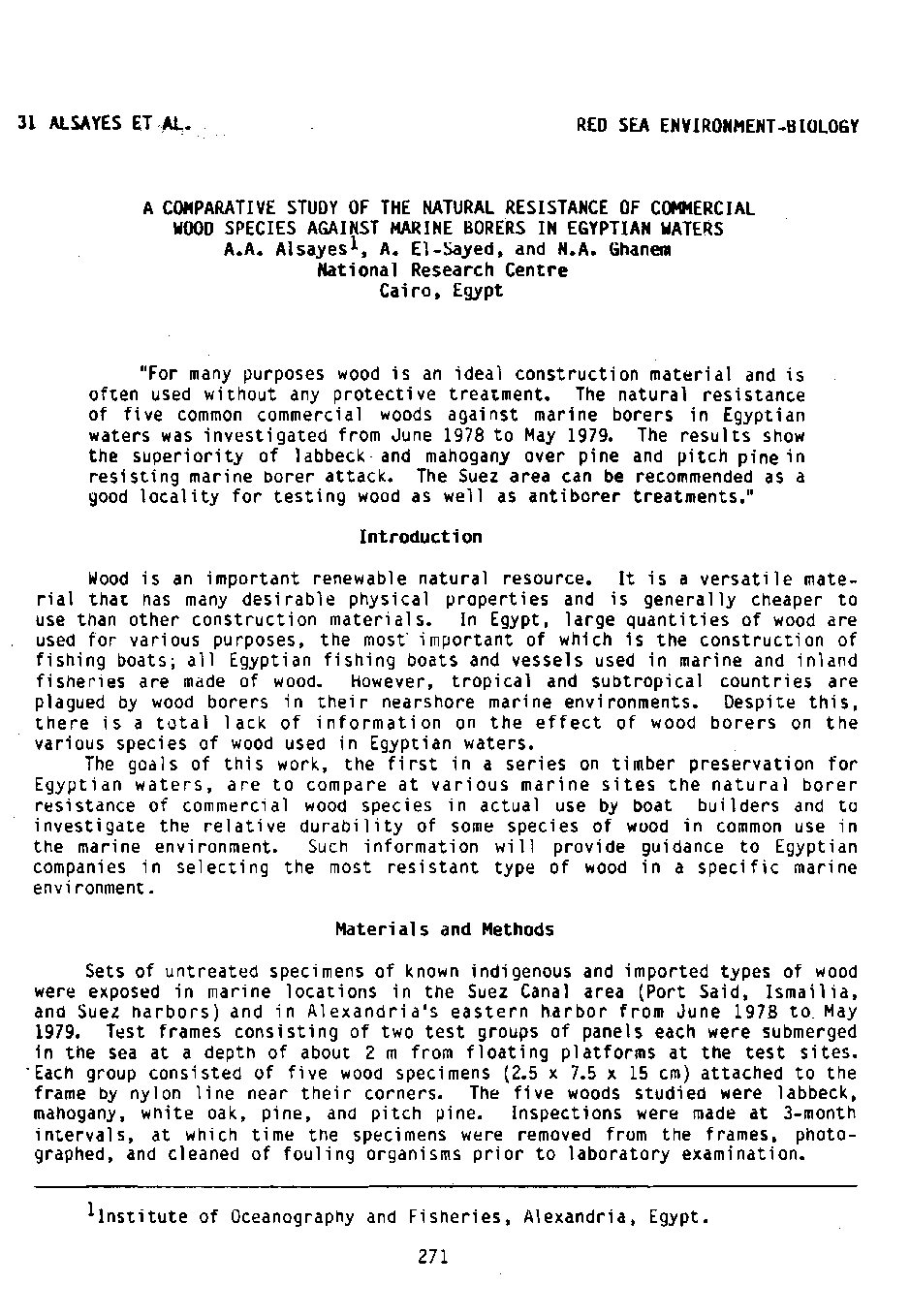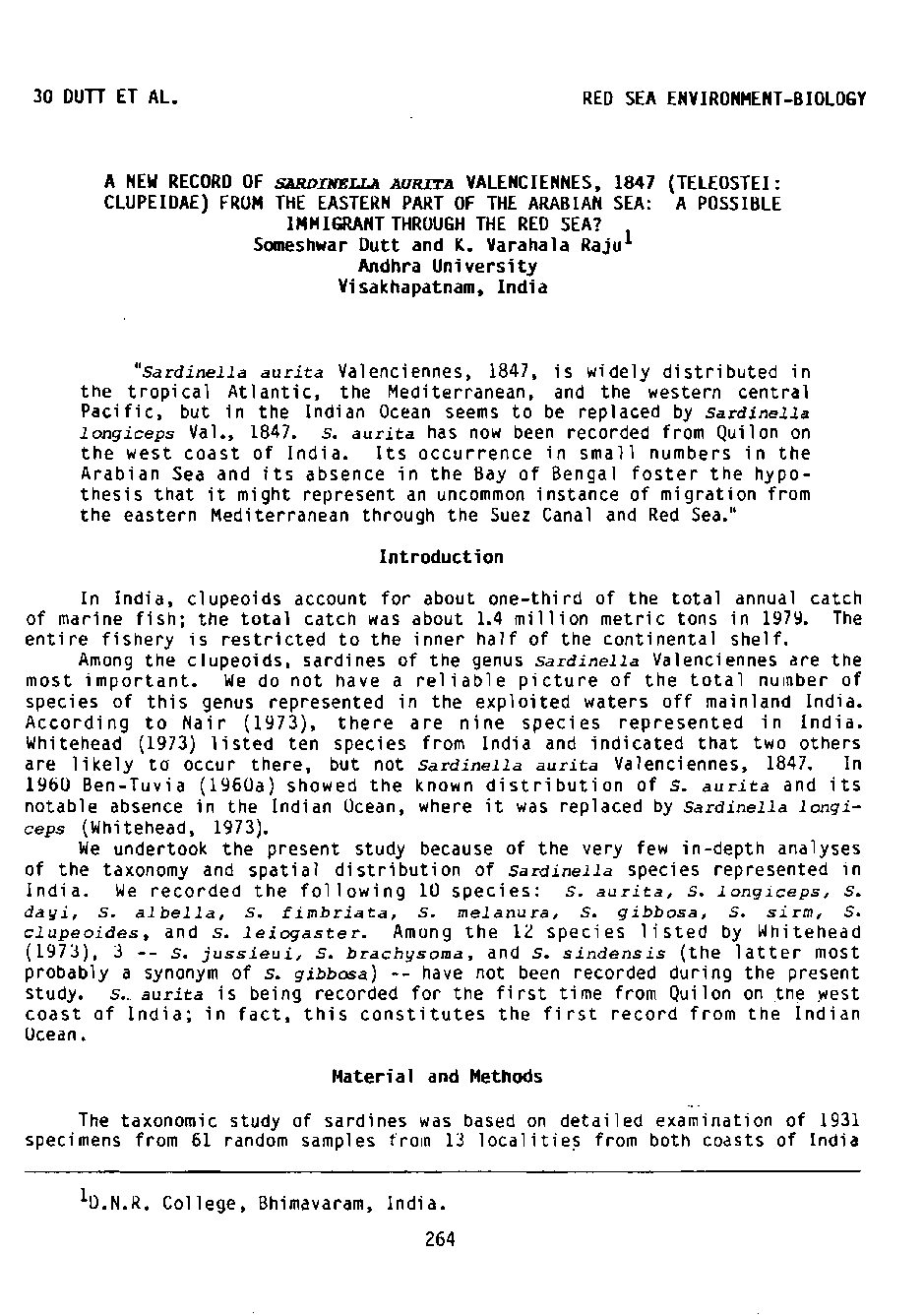Categories
vol-9ANALYSIS OF A CORAL REEF FISH COMMUNITY IN SHAllOW
WATERS OF NUWEIBA; YUlF OF AQABA RED SEA
Adam Ben-Tuvia. A. Diamant • A. Baranes1• and D. Golani
The Hebrew University of Jerusalem
Jerusalem. Israel
“Fi ve vi sua 1 fi sh censuses were conducted in coastal waters of
the Gulf of Aqaba, Red Sea, from July 1977 to November 1981. In
total 73 species were c~unted in three habitats of the investigated
site of an area of 74 m. The highest species diversity, species
ri chness, and standi ng crop were found on the forereef, less on the
knoll and on the se~grass-sand bed. The average standi ng crop
amounted to 962 kg h-. For further analysis of variations in species composition and number of individuals with time and habitat,
indexes of coefficient of community, species diversity, and equitability were calculated. Some observations on the seasonal occurrence of the common fi sh in the study site are qi ven.”
Introduction
There is an increasing interest in animal communities associated with the
~ed Sea coral reefs. Among them fish h~ve received a large share of attention.
Clark et ale (1968) presented data on the structure and standing crop of a
shallow-water coastal fish community along the coast of Ethiopia, southern Red
Sea. Bouchon-Navaro and Harmelin-Vivian (1981) studied the numerical abundance
of herbivorous reef fish near the Gulf of Aqaba, and Edwards and Rosewell
(1981) investigated the numerical abundance and vertical zonation of 38 common
reef fish near Port Sudan. Gunderman and Popper (1975) analyzed the influence
of cases of pollution on fish communities near Eilat. And several papers in
recent years dealt with various aspects of biology and behavior of fish in the
Gulf of Aqaba (Bouchon-Navaro, ·1980; Fishelson, 1977; Fishelson et al., 1974;
Fricke, 1973; Karplus and Algom, 1981).
The advent of scuba-diving equipment and the recognition of the scientific, commercial, and esthetic values of coral reefs have brought about the
publication of a considerable number of papers on fish communities of natural
and artificial reefs. Some of the recent ones (Brock et al., 1979; Heatwole et
al., 1981; Molles, 1978; Ogden and Ebersole, 1981; Sale and Dybdahl, 1978:
Talbot et al., 1978) contain most of the relevant bibliographic references.
Both phys i ca 1 and bi 01 ogi ca1 oceanographers have stressed the uni queness
of the enclosed, highly saline Red Sea. Its special place is accentuated by
its predomi nant 1y north -south geographi cor; entat; on and its remoteness from
the fauni sti c centers of the lndo-Pacif; c Ocean. The narrow ..Gu lf of Aqaba at
the northern end of·the Red Sea adds to the unusual features of the region. It
also forms one of the most northern extensions of the coral reef habitat of the






